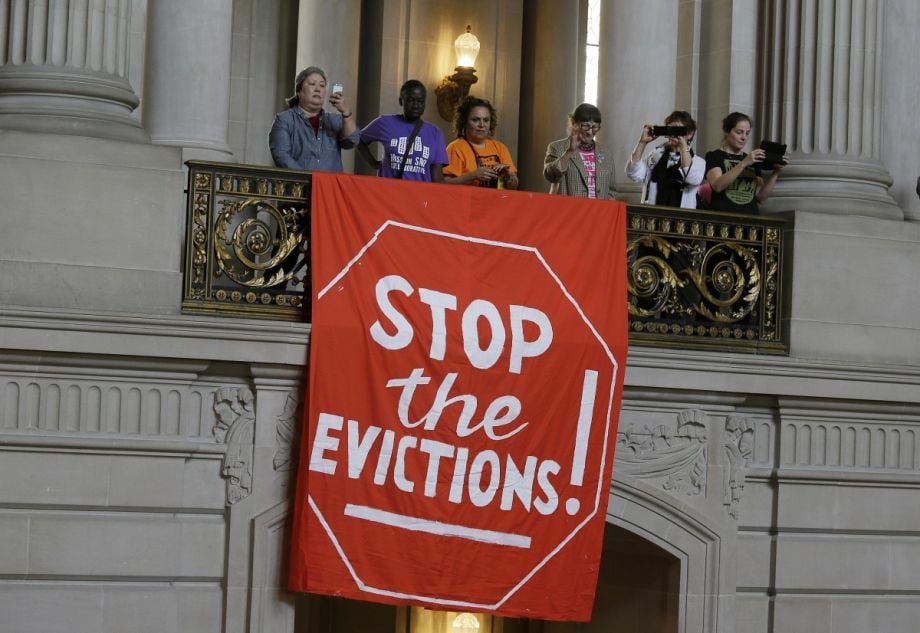This year, the term “housing crisis” became casual shorthand for the skyrocketing rents and limited stock of cities from Los Angeles to Denver. In response, leaders have been getting creative — implementing linkage fees and inclusionary zoning ordinances, legalizing small units around alleyways and even turning to Chipotle for funding. Here are some of the ways cities have attempted to preserve affordable housing in 2017.
Linkage Fees
Linkage fees (or impact fees) attempt to “link” affordable housing with market-rate production. Essentially, cities that have implemented them have charged developers a small fee for each market-rate unit to subsidize the creation of below-market rate units.
Los Angeles has had a stormy, on-again-off-again affair with linkage fees this year. Mayor Eric Garcetti began pushing for them several years ago, but the L.A. City Council put the idea on hold in June. After fine-tuning a proposal in August, however, council finally made linkage fees a reality in December.
Meanwhile, Denver’s City Council approved impact fees to fund around 6,000 additional units last year, and the decision has been revisited throughout 2017. Some city councillors have questioned whether the originally decided-upon $150 million is enough to relieve the city of its shortage. And with a new housing plan to guide investment, the city is shifting its strategy somewhat toward helping renters at risk of displacement.
Inclusionary Zoning
Both Detroit and Atlanta tried their respective hands at inclusionary zoning policies this year. In September, Detroit leaders approved an ordinance mandating that developers who receive more than a set threshold of public subsidies would put aside 20 percent of their units (at minimum) for lower-income residents. And in Atlanta, where long-promised housing along the new BeltLine park has yet to materialize, City Council decreed in November that developers must build a percentage of lower-cost units near the BeltLine and the Mercedes Benz Stadium. Developers will be able to choose between making 10 percent of their units affordable to residents earning 60 percent of the median income or 15 percent affordable to residents earning 80 percent of the median income. But Georgia law prohibits rent control, and at the time of the decision, outgoing mayor Kasim Reed hinted that state legislators could try to overrule the new policy.
The Chipotle Way
Last summer, Denver Mayor Michael Hancock announced a rent “buy-down” program, in which the city would purchase empty high-end apartments and then subsidize their rents for lower-income families with the help of corporate funding. The first “employer partner” to be announced was Chipotle, and the Denver Post reported at the time that some of the units would go to the burrito chain’s workers.
The strategy is apparently catching on in Atlanta, where the city has announced that it will also partner with business leaders to buy properties and keep their rents affordable.
Gentle Density
Building more units in less space (i.e., building up) can, of course, help to increase supply and, in theory, lower costs. But many cities, with the exception of the East Coast biggies, are still pining for four-story minimums and single-family homes. In an effort to foster what’s been called “gentle density,” Toronto officials have been chipping away at the regulations surrounding “laneway houses,” i.e., housing built around the city’s generous supply of alleyways. And repurposing under-used spaces has been a key strategy elsewhere as well. In May, one D.C. lawmaker proposed a bill that would enable old office spaces to be converted into housing.
Teaming Up
Boston’s housing shortage is so severe, it’s affecting the entire metro area. In response, 14 cities and municipalities announced a partnership in December to quicken the pace of residential construction throughout the region. The group plans to study demographic and data projections as well as development trends and economic forecasts to set an accelerated timeline for new housing construction.

Rachel Dovey is an award-winning freelance writer and former USC Annenberg fellow living at the northern tip of California’s Bay Area. She writes about infrastructure, water and climate change and has been published by Bust, Wired, Paste, SF Weekly, the East Bay Express and the North Bay Bohemian
Follow Rachel .(JavaScript must be enabled to view this email address)
















